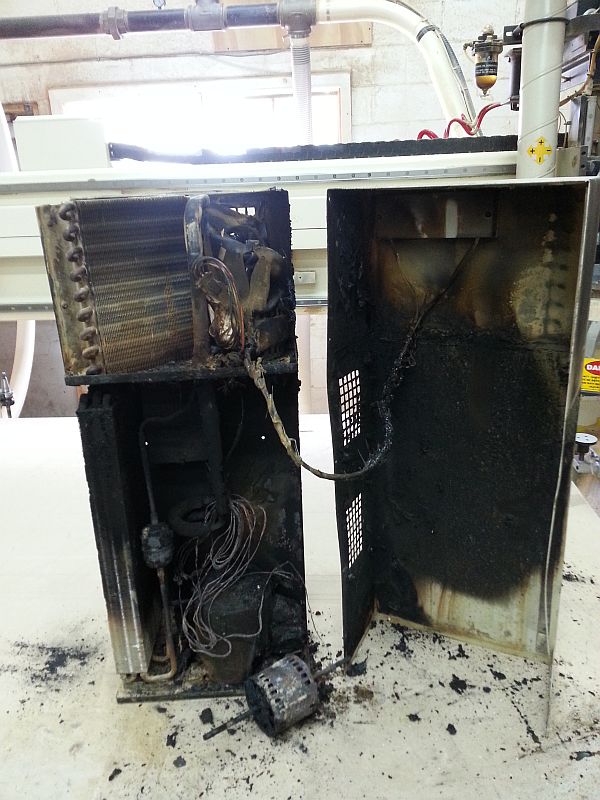"Step" or "Jump" Defect on Curves with CNC
CNC owners discuss why curves cut on a CNC router may not be smooth. January 28, 2009
Question
I keep getting "steps" in the surface when I´m running curves (2d) with my Victor CNC. Is this because of the stepper drives or is it just because of the light weight of the machine. Does anyone know if it´s possible to do something about this? I’ve been told that this occurs even on much more expensive machines though my subcontractors WADKIN 2000 from the early 90’s does not have this problem. Are there any tips on how to minimize the problem? (The material is massive birch).
Forum Responses
(CNC Forum)
From contributor B:
Make sure your "head" is Trammed in with the table. Put an indicator in the spindle and sweep the table surface to see that you are square to its surface. You might be canted a little. Just a .010 difference from side to side will give you steps on your surface.
From contributor S:
Are you talking about flat spots along the edge of a curve?
From contributor B:
Oh, I thought you were getting steps on your "Z" surface. But you must be talking about radial flats on the "X" and "Y" axis. This is different. It probably has something to do with following error on your drives that run your axis.
From the original questioner:
Yes I was talking about flat spots or small "jumps" along the edge of a curve. The most peculiar thing is that it seems like the "scrap side" of a curve seems to be better when we are talking about the jumps.
From contributor G:
If it is solid wood you are machining, and a light weight machine, it is probably the machine. As the machine is stepper based, ignore the comment about "following error", that would only apply with servos. Now, the steppers could be losing steps, but that would have other results like cut ends not lining up, etc.
I have a techno, a nice but light machine. I would not expect a perfectly smooth cut if it was a heavy cut. Maybe try doing many light passes (in depth) and see if it is smoother (along the curve). If yes, then it is just the rigidity of the table, and you may need to do one pass that is rough and leaves .030 and then another finishing pass to get the shape to exact size.
From contributor E:
It sounds to me like the software is at fault. Have you looked at the drawing to see if you have flat spots in it? If your nodes are flat spots you can't expect the machine to round them. Also, does your machine/software handle an arc or curve? You may need to change the way you program your arches.
From the original questioner:
We have been experimenting with both arches and curves and the result was pretty much the same. We also experimented with the tolerances for curve cutting and we got really long flat steps then, but, as I remember it now (stupid me threw the test pieces away) the surface was pretty clean between the turning points then. I might add that I get perfectly clean cut when I cut just straight x or y.
I always do 3-5 passes and then cut a finish cut of 0,5-1,5mm. It seems that cutting speed also affects the result: to fast poor result too slow also poor result best speed so far seems to be about 1500 mm/minute (about 60 inches).
From contributor G:
I have seen this when the DXF has a low smoothness setting, when the ball screw has slop in it, and when the material is not secure on the spoil board. I would suggest trying to slow the feed speed down.
